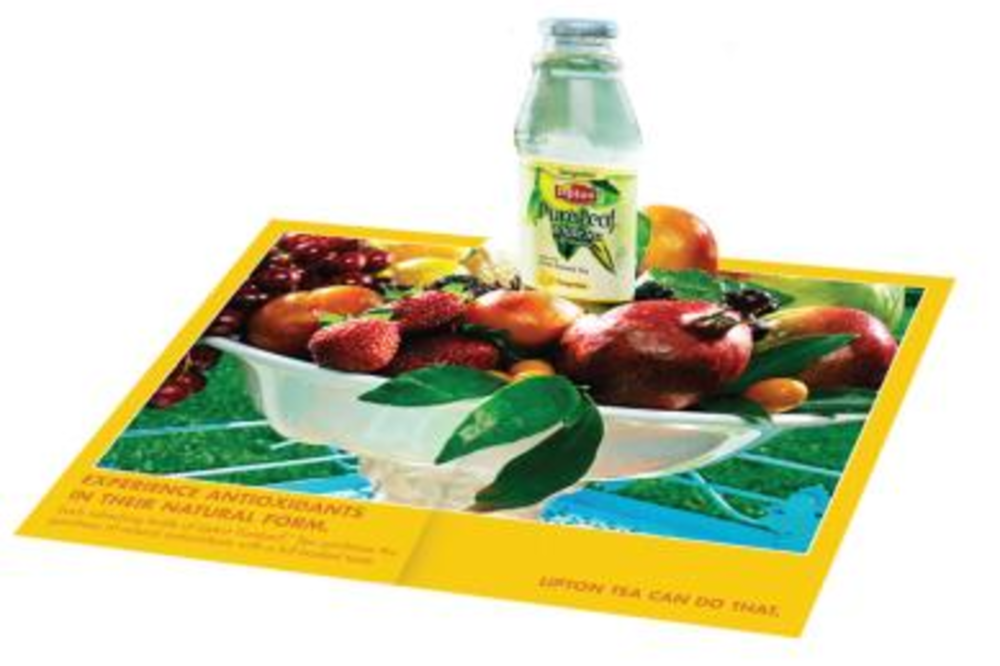Using environmental issues to market brands requires a delicate balance between informing and preaching, Melanie Shortman Tuazon reports.
Ubiquitous media coverage of environmentally-friendly practices and the acceptance of electronic marketing have created a cozy habitat for consumer brands looking to market their products and practices with a green angle. However, direct tactics must educate and practice what they preach to see results, say experts.
“More and more, consumers and even businesses using the products and services of other businesses are willing to pay a premium and loyalty to businesses that are green,” says Michal Ann Strahilevitz, Ph.D., associate professor of marketing at Golden Gate University, whose studies include consumer behavior in the green marketplace. “In essence, when you patronize green companies, that makes you greener too.”
Bringing green brands and messages to the people, however, requires a responsible and accessible approach to tried-and-true methods. Some have found success with regional tours and product sampling. “When people see it right in front of them, they realize that there are things they can do,” says Alain Begun, associate publisher of Better Homes and Gardens, which partnered with cleaning product line Green Works and home brands on a direct campaign called Living Green.
However, conducting a tour poses an environmental challenge — how to keep from using large amounts of fossil fuel. For Living Green, that meant using more environmentally friendly bio-diesel fuel. For others, carbon offsetting — in which companies counter carbon emissions with carbon-reducing practices, such as reforestation — is the answer, since refueling with alternative fuels can be difficult.
“The carbon offsetting has been well received,” says Matthew Saline, president and founder of Mambo Sprouts, a green marketing company that conducts regional tours with organic and health food brands.
To create the right perception, mailers and coupons must also be green in both message and medium. “We knew we wanted to do a high-impact piece to get the target’s attention,” says Sam Henning, management supervisor of Rapp Collins, regarding a green campaign he worked on for Lipton. “But we thought about how people interested in green living would perceive getting mail. We knew it was a must to use recycled paper.”
Coupons pose a similar problem. “We cut the size of our books,” says Saline, whose company has created coupon books featuring organic and green companies for 12 years. “It’s a concern that we continue to look at. Online couponing is getting bigger, but that requires paper as well.”
The greenest direct media are digital, and most green campaigns employ an online tactic. For many, a Web site complements other methods and educates the consumer through games, contests and measurement tools that make green living more accessible. Mobile campaigns are also being explored. Practitioners emphasize that electronic, like all green content, must be helpful and not preachy, because it’s easy to overdose on green messages and information. “Sometimes people think, ‘it’s just too hard to do the right thing, so [forget about] it,’” says Strahilevitz. “And being green isn’t all or nothing — people come in all shades of green.”
That said, experts say that consumers in danger of green fatigue. But this doesn’t mean that this most recent movement and its marketing represents a fad. “I think we’ve reached a tipping point in green awareness,” says Steen Andersson, VP of marketing for San Francisco-based 5th Finger, a mobile marketing company that conducts green campaigns. “There’s no going back in the effort to be more green.”
In the end, what makes a green campaign successful goes beyond the ROI typically sought by marketers. “Have you made someone aware of a product, a position or message that makes them [interested] in moral and ethical responsibility, [when] they weren’t before?” asks Saline. “That’s how we gauge success.”
Campaigns
Better Homes and Gardens
Living Green campaign
The magazine is currently partnering with Green Works, a line of natural cleaners from the makers of Clorox, and launched a Web site at bhg.com/livinggreen, to share tips and offer a home makeover giveaway. In the first six weeks, more than 500,000 people entered the sweepstakes online. A modular home powered by bio-fuel is currently visiting home shows, demonstrating products from Bosch, Pella, Kohler and Lee Furniture.
Lipton
PureLeaf relaunch
Realizing that people who seek all-natural foods generally live a greener lifestyle, last summer Lipton relaunched an iced tea product with all natural ingredients, along with a green campaign to support it. With the help of DM agency Rapp Collins, the brand combined a recycled mailer with a Web site and e-newsletter that contained information about environmentally friendly living tied in with the product’s story.
Assorted brands
Go Mambo Tour
In early May, Mambo Sprouts Marketing brought clients including Kashi, FruitaBu, Ian’s Nature’s Gate, Wymore, Sun Crystals, Back to Nature, Balance, Canus Goat’s Milk and Clif Kid together for the third annual Go Mambo regional tour. A van equipped with trained staffers and samples visited key markets, including retail stores and yoga studios, educating consumers and distributing coupons. The campaign also partnered with carbonfund.org to offset emissions from travel.







